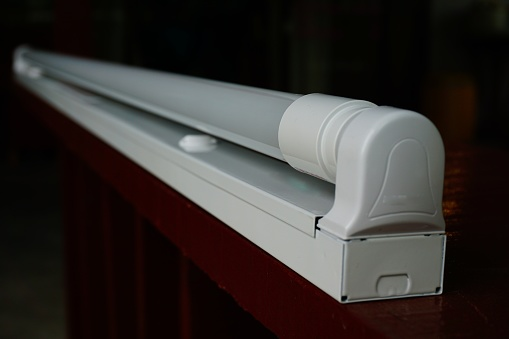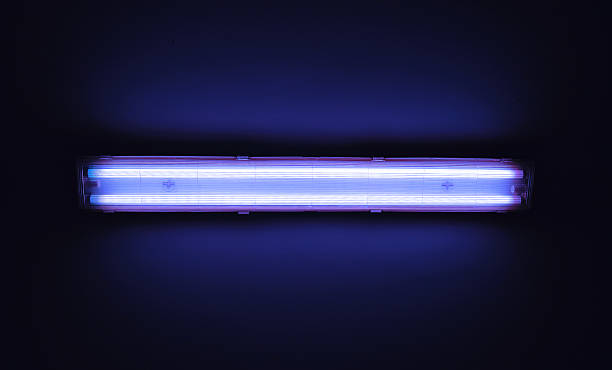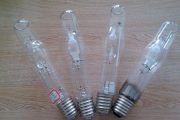What Is A Ballast Resistor?
1. Basic introduction
Ballast resistor is a device that limits current and generates instantaneous high voltage on fluorescent lamps. It is made of enameled wire wrapped around an iron core made of silicon steel. Such a coil with iron core can be turned on/off in an instant. When the high voltage is generated by self-induction, it is applied to the electrodes (filaments) at both ends of the fluorescent tube.
This action is carried out alternately. When the starter (bubble jumping) is closed, the filament of the lamp tube is limited to conduct heat through the ballast; when the starter is open, the ballast will self-inductively generate high voltage and add On the filaments at both ends of the lamp tube, the filament emits electrons to bombard the fluorescent powder on the tube wall, and the starter is repeatedly turned on and off several times, and this action will be repeated several times, thereby opening the lamp tube.
When the lamp tube emits light normally, the internal resistance becomes smaller, and the starter is always kept in an open state, so that the current flows through the lamp tube and the ballast stably, so that the lamp tube can emit light normally.
Since the ballast always has current passing through when the fluorescent lamp is working, it is easy to generate vibration and generate heat. Therefore, the fluorescent lamp with ballast, especially when the quality of the ballast is not good, will produce a lot of sound. Over time, it is easy to burn.

2. Invention process
In the 1970s, there was a worldwide energy crisis, and the sense of urgency to save energy made many companies focus on the research of energy-saving light sources and electronic ballasts for fluorescent lamps. With the rapid development of semiconductor technology, various high back-voltage power switching devices continued to emerge , which provides conditions for the development of electronic ballasts.
In the late 1970s, foreign manufacturers took the lead in launching the first generation of electronic ballasts, which was a major innovation in the history of lighting development.
Due to its many advantages such as energy saving, it has attracted great attention and interest from all over the world. It is considered to be an ideal product to replace magnetic ballasts. Subsequently, some well-known enterprises have invested considerable manpower and material resources to carry out higher-level development. Research and Development.
Due to the rapid development of microelectronics technology, the development of electronic ballasts to the direction of high performance and high reliability has been promoted, and many semiconductor companies have launched a series of products of special power switching devices and control integrated circuits.
In 1984, Siemens developed active power factor correction electrical ICs such as TPA4812, and the power factor reached 0.99.
Then some companies launched integrated electronic ballasts one after another. In 1989, the Finnish company Helvali successfully launched a dimmable monolithic integrated circuit electronic ballast. Electronic ballasts have been popularized and applied all over the world, especially in developed countries.
In the late 1980s, the United States applied toroidal magnetic ballasts to compact energy-saving fluorescent lamps, and in 1988 Midwest Toriod began mass production.
China started production in the early 1990s.
3. Working principle
(1) Inductive ballast
When a 220V 50HZ AC power supply is applied in the switch closed circuit, the current flows through the ballast, and the lamp filament starter heats the filament (the starter is disconnected at the beginning, due to the application of an AC voltage greater than 190V or more) , make the gas arc discharge in the jumping bubble in the starter, make the bimetal sheet heat and deform, and the two electrodes are close together to form a passage to heat the filament).
When the two electrodes of the starter are close together, since there is no arc discharge, the bimetal is cooled, and the two poles are separated. Since the inductive ballast is inductive, when the circuit is suddenly interrupted, a 600V duration of about 1ms will be generated at both ends of the lamp. -1500V pulse voltage, the exact voltage value depends on the type of lamp.
In the case of discharge, the voltage across the lamp drops immediately. At this time, the ballast limits the lamp current on the one hand, and produces a phase difference of 55° to 65° between the power supply voltage and the working current of the lamp on the other hand. , so as to maintain the secondary starting voltage of the lamp, so that the lamp can work more stably.
Due to its simple structure, inductive ballast is the first ballast that works with fluorescent lamps, and its market share is still relatively large.
Due to its low power factor, poor low-voltage starting performance, cumbersome energy consumption, stroboscopic and many other shortcomings, its market is slowly replaced by electronic ballasts.
Inductive ballast energy loss: 40W (lamp power) + 10W (inductive ballast self-heating loss) is equal to the total power consumption of the entire set of lamps is 50W.
(2) Electronic ballast
Electronic ballast is a converter that converts power frequency AC power into high frequency AC power. Its basic working principle is:
After the power frequency power supply goes through a radio frequency interference (RFI) filter, full-wave rectification and passive (or active) power factor corrector (PPFC or APFC), it becomes a DC power supply.
Through the DC/AC converter, the high-frequency AC power supply of 20K-100KHZ is output, which is added to the LC series resonant circuit connected to the lamp to heat the filament, but the “discharge” of the lamp tube becomes “on” state, and then enters the light-emitting state.
At this time, the high-frequency inductance plays a role in limiting the current increase to ensure that the lamp tube obtains the lamp voltage and lamp current required for normal operation.
In order to improve reliability, various protection circuits are often added, such as abnormal protection, surge voltage and current protection, temperature protection and so on.

4. Features
Everything has two sides, and ballasts also have their own advantages and disadvantages in use.
Its notable advantages are:
(1) Energy saving.
Electronic ballasts for fluorescent lamps mostly use 20-60kHz frequency to supply lamps, so that the luminous efficiency of lamps is increased by about 10% compared with the power frequency (according to lamps with a length of 4 feet), and their own power consumption is low, so that the total lamp power is reduced. The input power is reduced by about 20%, and there is a better energy saving effect.
(2) The strobe is eliminated, and the light is more stable.
It is beneficial to improve the visual resolution and efficiency; reduce the visual fatigue of continuous operation and help to protect the eyesight.
(3) The starting point is more reliable.
After the lamp is preheated, the starting point is successful at one time, and multiple starting points are avoided.
(4) High power factor.
Fluorescent lamps above 25W that meet national standards have a power factor higher than 0.95. However, it should be noted that the harmonic limit specified by the national standard for lamps below 25W is very high, so that its power factor drops to 0.7~0.8.
(5) Stable input power and output luminous flux.
High-quality products have good voltage regulation performance. When the power supply and voltage deviation are large, they can still maintain a constant power of the light source and stabilize the illuminance, which is conducive to energy saving.
(6) Extend lamp life.
Factors such as constant power and lamp current drop in high-quality products, as well as reliable starting point, can prolong lamp life.
(7) Low noise.
The noise of high-quality electronic ballasts can reach below 35db, and people cannot feel the noise.
(8) Can be dimmed.
For places that need dimming, such as places where incandescent or tungsten halogen lamps are used for dimming, high-efficiency fluorescent lamps are replaced with dimmable electronic ballasts, which can achieve a wide range of dimming from 2% to 100%.

Correspondingly, the disadvantages of ballasts are:
(1) Pay attention to harmonic content.
The newly revised “Performance Requirements for AC Electronic Ballasts for Tubular Fluorescent Lamps” (GB/T15144-2005) has cancelled the polarities (L and H) of electronic ballasts specified in the original standard, and its harmonic limit It should comply with “Emission Limits of Electromagnetic Compatibility Limits for Harmonic Currents” (GB17625·1-2003).
(2) Pay attention to product quality and level.
There are many electronic ballasts on the market at present, and the quality and level are quite different.
The main manifestations are: high harmonic content; low lumen coefficient; low reliability; short service life.
5. Ballast resistor selection
(1) Energy-saving magnetic ballast
The main advantages are high reliability, long service life, low harmonic content, and low price. Except for special requirements for vision, it can be widely used, and it is also a product recommended by Chinese standards.
(2) Straight tube fluorescent lamp ballast
Influence of Straight Tube Fluorescent Ballasts on Implementing “Lighting Power Density (LPD)” Limits
Chapter 6 of GB50034-2004 stipulates the maximum limit index of “Lighting Power Density (LPD)” and is issued as a mandatory provision. This regulation is undoubtedly very positive and effective for the implementation of my country’s energy-saving policy.
To implement this indicator, various measures must be taken in an all-round way, including reasonable determination of the illuminance level and scientific lighting engineering design.
However, the reasonable selection of lighting equipment, including light sources, lamps and ballasts, is a very important factor.
Among them, the light source is the first element.
Take the most widely used straight tube fluorescent lamp as an example. If the high-efficiency T8 tri-color fluorescent lamp (36W) is used compared with the T8 halogen powder fluorescent lamp, when the same color temperature is used, the former can increase the light efficiency by 30%; when the illumination is the same, the installation power of the former can be reduced by 23%.







